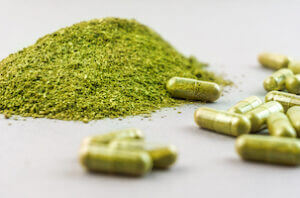The Future of Ready-to-Eat Salads: Innovations in Packaging and Processing to Prevent Listeriosis
The Future of Ready-to-Eat Salads: Innovations in Packaging and Processing to Prevent Listeriosis
Ready-to-eat salads have become a popular choice for health-conscious consumers seeking convenience and nutrition. However, the risk of contamination by Listeria monocytogenes remains a significant concern. Listeriosis, the infection caused by this bacterium, can have severe health consequences, particularly for vulnerable populations. To address this challenge, researchers and food industry professionals are developing innovative packaging and processing technologies to enhance the safety of ready-to-eat salads and prevent listeriosis. This article explores the future of ready-to-eat salads through the lens of these cutting-edge innovations.
Innovations in Packaging Technologies
Packaging plays a critical role in preserving the freshness and safety of ready-to-eat salads. Recent advancements in packaging technologies aim to extend shelf life, prevent contamination, and improve overall food safety.
Active Packaging
Active packaging involves the incorporation of active agents into the packaging material to enhance food safety. These agents can include antimicrobial compounds, oxygen scavengers, and moisture regulators. For ready-to-eat salads, antimicrobial packaging materials can help inhibit the growth of Listeria and other pathogens. Examples of antimicrobial agents used in active packaging include:
- Natural Extracts: Essential oils and plant extracts, such as oregano and thyme, have antimicrobial properties that can be incorporated into packaging materials to prevent bacterial growth.
- Silver Nanoparticles: Silver nanoparticles have been shown to possess strong antimicrobial activity and can be embedded in packaging films to reduce the risk of contamination.
Modified Atmosphere Packaging (MAP)
Modified Atmosphere Packaging (MAP) involves altering the composition of gases within the packaging to extend the shelf life of food products. For ready-to-eat salads, MAP can help maintain freshness and inhibit the growth of spoilage organisms. Common gas mixtures used in MAP include:
- Oxygen and Carbon Dioxide: Reducing oxygen levels and increasing carbon dioxide levels can slow down the growth of aerobic bacteria and spoilage microorganisms.
- Nitrogen: Nitrogen is often used as a filler gas to replace oxygen, creating an environment less conducive to bacterial growth.
Intelligent Packaging
Intelligent packaging systems provide real-time information about the condition of the food product, enhancing consumer safety and confidence. These systems can include sensors, indicators, and tracking technologies. Examples of intelligent packaging for ready-to-eat salads include:
- Time-Temperature Indicators (TTIs): TTIs can monitor the temperature history of the packaged salad, indicating whether it has been exposed to temperature abuse that could compromise safety.
- Freshness Indicators: Freshness indicators can provide visual cues about the quality and safety of the salad, alerting consumers to potential spoilage or contamination.
Innovations in Processing Technologies
In addition to packaging, advancements in processing technologies are crucial for preventing Listeria contamination in ready-to-eat salads. These technologies aim to reduce the bacterial load and enhance the overall safety of the product.
High-Pressure Processing (HPP)
High-Pressure Processing (HPP) is a non-thermal pasteurization method that uses high pressure to inactivate pathogens and spoilage organisms. HPP can effectively reduce the presence of Listeria without compromising the nutritional quality and sensory attributes of ready-to-eat salads. Key benefits of HPP include:
- Extended Shelf Life: HPP-treated salads have a longer shelf life due to the reduction of microbial load.
- Retention of Nutrients: Unlike thermal processing, HPP preserves the nutritional content and freshness of the salad.
Ultraviolet (UV) Light Treatment
Ultraviolet (UV) light treatment is another non-thermal method used to inactivate pathogens on the surface of fresh produce. UV light can penetrate the outer layers of vegetables, reducing the presence of Listeria and other bacteria. Advantages of UV light treatment include:
- Rapid Processing: UV treatment is a quick and efficient method for decontaminating produce.
- Chemical-Free: UV light treatment does not involve the use of chemicals, making it a safe and environmentally friendly option.
Electrolyzed Water
Electrolyzed water is an antimicrobial solution produced by electrolysis of water and salt. It has strong disinfectant properties and can be used to wash fresh produce, including ready-to-eat salads. Benefits of electrolyzed water include:
- Effective Disinfection: Electrolyzed water can effectively inactivate a wide range of pathogens, including Listeria.
- Safety: It is safe for use on food products and does not leave harmful residues.
Future Directions and Research
Ongoing research and development in packaging and processing technologies are paving the way for safer ready-to-eat salads. Future directions in this field include:
- Nanotechnology: The use of nanotechnology in packaging and processing could lead to more efficient antimicrobial agents and sensors for detecting contamination.
- Personalized Packaging: Customized packaging solutions based on individual consumer preferences and dietary needs could enhance the safety and appeal of ready-to-eat salads.
- Blockchain for Traceability: Implementing blockchain technology for supply chain traceability can improve transparency and accountability, ensuring that ready-to-eat salads are safe from farm to table.
Conclusion
The future of ready-to-eat salads lies in the integration of innovative packaging and processing technologies designed to prevent listeriosis and enhance food safety. By leveraging advancements such as active packaging, modified atmosphere packaging, high-pressure processing, and UV light treatment, the food industry can provide consumers with safe, fresh, and nutritious salads. Continued research and collaboration between scientists, food producers, and regulatory agencies will be essential to drive these innovations forward and protect public health.







